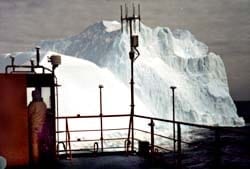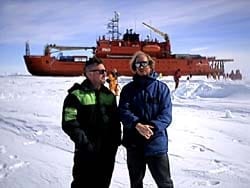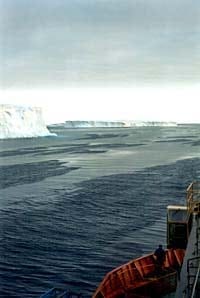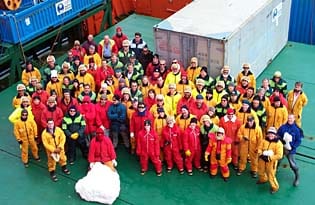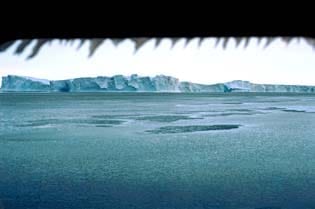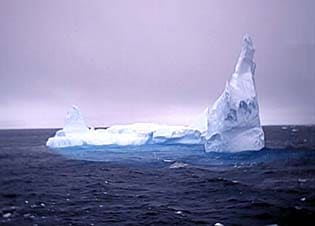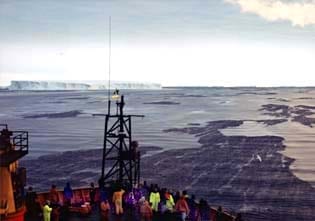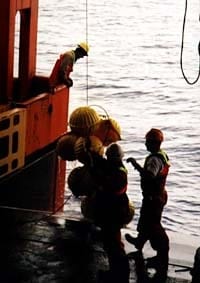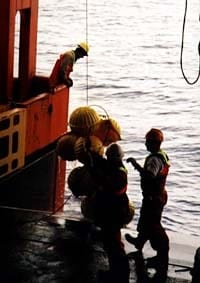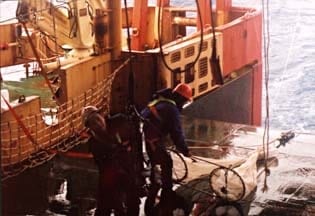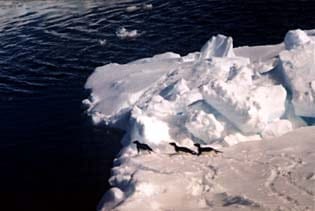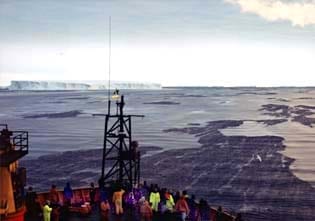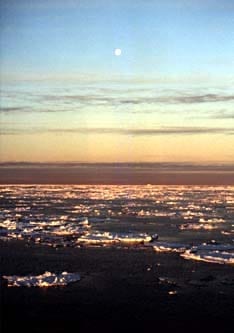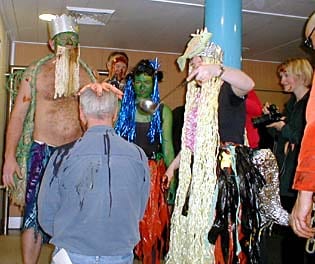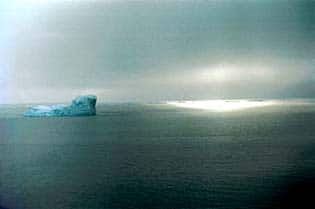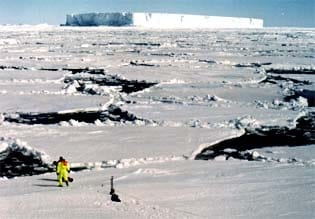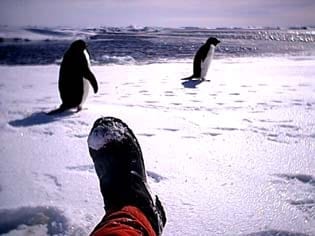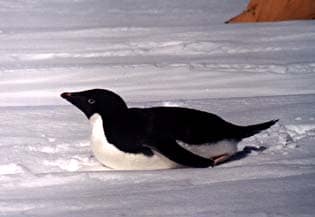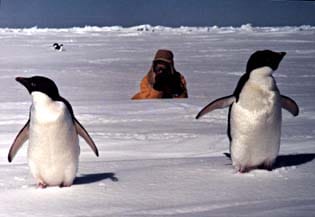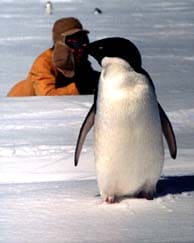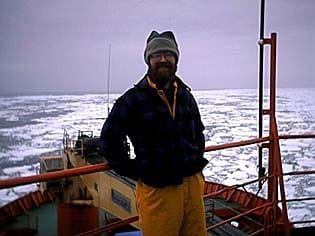Postcards from the Bottom of the Earth: November 22, 2001 (Part 1)
(Note to readers: due to the length of Ken’s first letter to family and friends, it has been broken into two parts. Ellipses ... denote places where the original letter has been excerpted.)
Happy Thanksgiving! At least it’s already Thanksgiving Day on Aurora Australis, but only about 6 p.m. on Wednesday the 21st back in Falmouth, MA. One advantage of being on Australian time is that you can always be early for the greetings back home. However, since they send these emails only a couple of times per day, you may or may not get this before you sit down to your turkey dinner.
I thought I’d try to write a few impressions from my cruise to the Antarctic coast, which departed three weeks ago from Hobart, Tasmania, aboard the research and supply vessel Aurora Australis. This is a 300+ foot icebreaker with 70 scientists and 40 or so crew on board. It’s definitely large to look at from the docks, but quite small once you cram in all of our sampling and lab gear.
As an icebreaker, it is round-bottomed and designed to ride up onto ice flows and break through using the weight of the ship. This is great when you are in ice, but in the open seas, a round bottom means lots of rolling even in normal seas. The seas here at 60 degrees south latitude are anything but calm! We have been warned about 45 degree pitches and rolls, and we’ve already seen 30 degrees...all while holding a glass beaker full of water and reagents and trying to pour them into another vessel without spills. The basic facts of ship life include constant rolling and pitching, and the background drone of the engines, winches, and others ships gear.
I share a small cabin one deck above the water level with Tom Trull, an old science buddy from my WHOI graduate school days and now permanent resident in Hobart. We have a porthole that we can open with effort, but we keep it closed since the waves sometimes hit it with some force. I’m relatively pleased with the cabin since we share a tiny head and shower between the two of us. Normally on US ships it’s four or more to a bathroom...
Meals are a major event, only because there is little else to break up your day. I’ve told others that the Australian food is typically meat (lots of lamb) or fish (pretty good) capped by sweet desserts like puddings, cakes, and other English/Australian favorites. As with eating in any one place, you get tired of the same dishes, including the odd ones like octopus salad, canned asparagus salad, or the large cooked prawns that keep showing up. They have a good selection of veggies and lettuce stuff so far. Why we can’t keep lettuce so long at home is a mystery...
Now for some sea stories. One of the amazing things about ocean sciences is that we are still in a “discovery” stage. Every time we drop our water bottles in and look at the data, there are still surprises. We are still using basically crude technology (water bottles) and vastly undersampling this ocean planet. The Aussie group I am working with studies this region extensively, but they still get surprised...
Well, there’s no Macy’s parade today out here, but there are rumors of Aussie Turkey. And we can always have our three-can limit of “VB” (Victoria Bitters beer) at the Husky bar (named after sled dogs) tonight. I would send photos, but they need special approval and quite frankly, there is little to see since we are in the middle of the ocean with only the seabirds to keep us company. Within the week we get south to the ice edge, and this is where the penguins and seals start showing up and getting a photo or two might be worth the effort.
So, I guess it’s not quite like “Survivor” out here, but the word “cruise” is not an apt description either. Thirty- to fifty-knot winds and waters below 0 degrees Celsius are not very inviting. I think I’ll stay inside this Thanksgiving, working on my samples, trying out the Aussie turkey, thinking of all of you back home, and wishing I were able to be in two places at once on this holiday.
Greetings and love from the far south!

